We’ve all been there: The restaurant with the book-sized menu. And worse: The one where everything seems appealing. In those moments, there’s nothing better than a decisive waiter, a guide who can lead you to the right page and then to the right choice. MLB’s upcoming offseason has a bevy of drool-worthy free-agent options, but not every great player fits every team’s needs or wants.
That’s why ranking players in one big list doesn’t make the most sense. You can’t really stack the sushi up against the pasta bolognese, no matter how hard you might try. So instead, we’re going to divide baseball’s best hot stove options into categories and then rank the players’ outlooks within those categories. As ever, when dealing with prognostications of future performance, this is an inherently subjective task, but I’ll do my best to explain why one shortstop or starting pitcher might be a better, safer or more promising target than the next. From there, you’re free to develop your own tastes.
The tiers are also ranked, in a way, starting with the bracket likely to merit the highest average annual salaries and descending to the lowest likely annual values.
You can follow along here all winter to track the latest signings and any other movement in the class.
(A few notes: Players are listed with their primary projected position and the age they will be in the 2023 season. All WAR figures, unless otherwise noted, use FanGraphs’ calculations. Those marked with an asterisk* will only become free agents pending contract option decisions.)
GAME-CHANGERS
Aaron Judge, outfielder (31)
In belting 62 homers, posting the 2022 version of a Barry Bonds batting line and even playing a passable center field, Judge established a tantalizing new ceiling, proved crucial gains in durability and contact rate, and all around stuck it to a New York Yankees front office that seemed to think it had the face of the franchise cornered last spring. The very public $213.5 million extension offer — $30.5 million per year for seven years — won’t cut it now.
The newly crowned AL MVP doesn’t need to answer anything this winter, but the questions teams will ask have to do with the historical aging curve for sluggers who are super tall and/or over age 30. It’s a real issue to consider, but we can’t lump Judge in thoughtlessly. He has always been more athletic than most of the scary comparison points (Richie Sexson, Albert Pujols, etc.), and we have more information about how he produces. You can’t expect him to bash 62 homers or slug .686, but for the next two to three seasons, his is probably the most impactful bat imaginable.
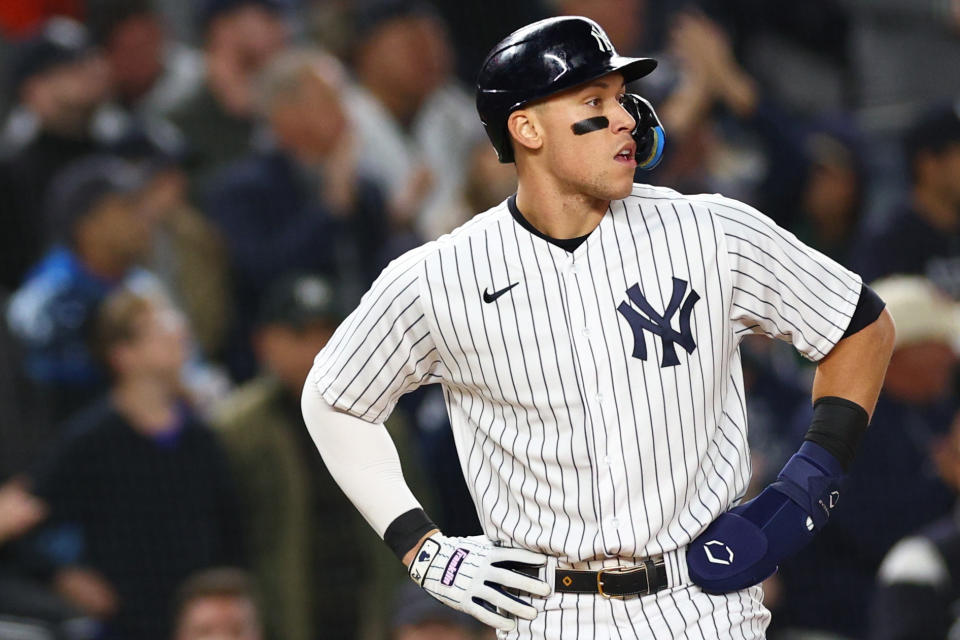

It’s going to take a longer commitment to sign Judge, but expect at least one team to test how far they can get by offering Judge a sky-high average annual value (AAV) for fewer years. It’s an approach the Los Angeles Dodgers have attempted before (with Bryce Harper) and one the San Francisco Giants — under former Dodgers executive Farhan Zaidi — are in a particularly good position to try if the Yankees are slow to secure their monument in the making.
The MLB AAV record is $43.3 million (Max Scherzer with the New York Mets), and the position player record is $35.5 million (Mike Trout with the Los Angeles Angels). At $44 million per year, Judge could eclipse the $300 million threshold in seven years. At $50 million, he could do it in six. That might not be his preference, but it is one way to make an appeal.
Jacob deGrom, starting pitcher (35) — signed five-year, $185 million deal with Texas Rangers
Justin Verlander, starting pitcher (40) — reportedly agreed to two-year, $86 million deal with New York Mets
Those AAV records aren’t a bar to watch only in the Judge bidding. They could be a major plot point of the winter, thanks to these two aces. Indeed, the players in this top tier are here because they each, in their own way, have a potent mix at work in free agency: Immense immediate impact and murkier long-term outlooks. Since 2018 — a handy reference point when deGrom leveled up and Verlander threw his first full season for the Houston Astros — they have been baseball’s most dominant starters, and it’s not really close. DeGrom has a 2.05 ERA, good for a 193 park-adjusted ERA+. Verlander has a 2.33 ERA, good for a 182 ERA+. They are also first and second in WHIP and batting average allowed.
They have thrown roughly the same number of innings over that time — 645 1/3 for deGrom, 618 for Verlander — but the ways they missed time were wildly different. Verlander was out for basically two seasons due to Tommy John surgery but has otherwise made his starts like clockwork and expressed a desire to continue his “What if Nolan Ryan without the walks?” routine for years to come in pursuit of 300 wins. DeGrom has fashioned himself Baseball Icarus, a pitcher who has reached heights the human body might not be built to handle. That’s how you wind up in a world where the 40-year-old might actually get the longer guaranteed deal.
Still, deGrom is the one throwing 102 mph with maybe the best slider in the history of starting pitchers. Whichever team gets him will be looking at a blindingly bright upside, with the known risk that his health fails him. Verlander, on the other hand, is just well-managed downside. The Cy Young Award and shiny ERA don’t show it, but his strikeout rate dipped considerably in 2022 — no point of shame for a pitcher his age — and batters made more contact on his pitches in the zone than they had since before his Houston reinvention. He’s still a force, but that force is going to continue to weaken during his next deal.
CORNERSTONES
Carlos Correa, shortstop (28)
Expected to opt out of his deal with the Minnesota Twins, Correa was here just last year and decided to take the contract that allowed him to try again. He’s once again in competition with a raft of stellar shortstops, but he should find a long-term home this time.
The knock is a penchant for minor but persistent injuries. The appeal is an all-around player who’s coming off posting 4.4 WAR in 136 games, with a 144 wRC+ (a park-adjusted measure of offensive production) that ranked first among shortstops on the market. His A-Rod-style body contains the most physical potential — and portends the most long-term stability — of the group. His maximum exit velocities are the highest. His defensive work at shortstop is actually the most consistent of the bunch, and his superior arm will allow him to move to third base the most easily. Add in Correa’s age (he’s the youngest) and renowned clubhouse intellect, and he’s the best option among several truly excellent ones.
If you have one shot, this is the shortstop with which to throw in your lot. I’m guessing someone will do that to the tune of a Corey Seager-esque deal of $33 million or more per year.
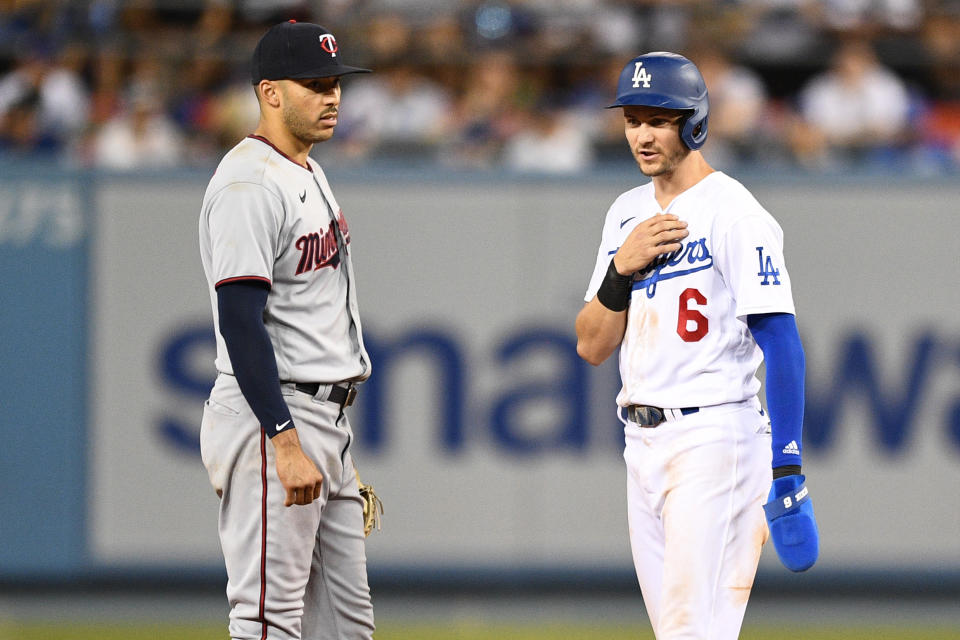

Trea Turner, shortstop (30)
Turner has leveled up the past three seasons into more than a speed threat. He has played at the level of a legitimate MVP contender since 2020, hitting for power while keeping his wheels and low strikeout rate. And he’s an incredibly fun player to watch. Now and for the next few years at least, he’s going to be a constant terror for opponents at the plate and on the bases.
Likely to sign a deal that takes him beyond his mid-30s, Turner might face a steeper decline when he begins to lose a step and the bevy of doubles and triples gets shaved into singles and doubles. OK but less than sure-handed at shortstop, he also might be headed for a move to second base in the near future. Maybe the most intriguing idea to maximize his abilities is one the Washington Nationals briefly tested: Turner in center field.
Wherever his strongest suitor sees him, his deal will likely be neck-and-neck with Correa’s.
Xander Bogaerts, shortstop (30)
Bogaerts will almost assuredly opt out of his $20 million per year deal with the Boston Red Sox and test the market. A Boston mainstay with two World Series rings, the 30-year-old might be the most bankable of the shortstops. He has been remarkably consistent, accumulating at least 580 plate appearances in every full season of his career (and missing only four games in the shortened 2020 season). Since 2018, his annual wRC+ marks have all been between 129 and 140. He has worked to solidify his defensive chops at shortstop, even if they’re still nothing to write home about.
The point is: You know what you’re getting with Bogaerts, which means you don’t get to dream much on him, but you also don’t need any imagination at all to see him as the fulcrum of a championship-level team. Expect a club with those aspirations — which might or might not include the Red Sox — to scoop him up for a deal that pays him more than $25 million per year but requires substantially less commitment than Correa or Turner.
Carlos Rodon, starting pitcher (30)
Teams weren’t quite willing to take the leap after the injuries that seemingly derailed Rodon’s career also cropped up near the end of his 2021 breakout. So he signed a short deal, including an opt-out, with the San Francisco Giants, and then he shoved for a full 178 innings. They will jump this time, and we have a great idea of what the deal will look like: Adjust the Kevin Gausman and Robbie Ray deals of last winter for inflation and any potential contender desperation, and voila: five years, $125 to $140 million.
The ceiling for Rodon is probably higher than either of those similar late-20s breakout aces. Perhaps the most prominent lefty practitioner in the school of “Two Awesome Pitches And That’s It, Good Luck,” his devastating fastball/slider combo looks like it will play as long as his arm holds up.
Clayton Kershaw, starting pitcher (35) — reportedly re-signed by Dodgers on one-year deal worth close to $20 million
Kershaw has basically transcended the traditional bounds of free agency. While he isn’t the top pitcher in the sport anymore, the quaint, contained drama of whether he accepts his open invitation from the Dodgers each year almost obscures the excellence he’s still offering up and the fact that he’s only three months older than deGrom.
Kershaw is good for about 120 innings per year — his past two seasons each consisted of 22 starts — but those innings are really good. Of the 140 pitchers who reached that threshold in 2022, Kershaw had the sixth-best ERA, with a mark identical to that of NL Cy Young Award winner Sandy Alcantara.
Everyone knows the difference: Alcantara did it over 100 additional innings, but 120 Hall of Famer innings are better than none.
BIG DEALS
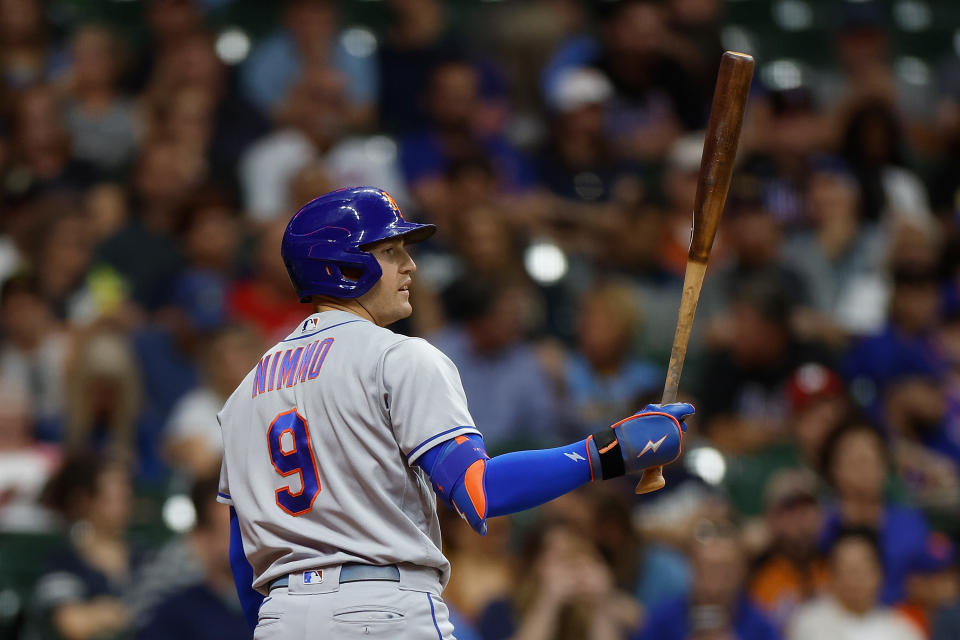

Brandon Nimmo, outfielder (30)
Dansby Swanson, shortstop (29)
OK, admittedly, the homegrown Mets center fielder isn’t often in the same conversation — in terms of hype or projected dollar amount — as Atlanta Braves shortstop Dansby Swanson heading into the winter. You might think Nimmo vs. Swanson isn’t even really a choice, but it could be a real calculation for a whole host of teams: Mariners, Red Sox, Cubs, Giants, Cardinals. More importantly, the comparison helps illustrate why Swanson isn’t interchangeable with the rest of the high-end shortstop market.
Like Swanson, Nimmo is coming off a season in which his defensive numbers markedly improved. Unlike Swanson, Nimmo didn’t also need to provide proof of his bat in 2022; it was already a known commodity pulled down only by a spate of injuries that limited his playing time in 2019 and ’21. See, better defense is great, but there’s too much precision implied in Nimmo’s career-best 5.4 WAR and Swanson’s even glitzier career-best 6.4 WAR in 2022. Any search for a lineup anchor for the next half-decade or more should focus on the more stable offensive statistics.
No matter how you slice it, Nimmo is the more dependable bat. Here are the overall numbers since 2019, which is when Swanson found his footing at the plate.
Nimmo: .271/.383/.437, 40 homers, 20.1 K%, 134 wRC+ in 367 games
Swanson: .261/.325/.444, 79 homers, 25.2 K%, 104 wRC+ in 509 games
Nimmo’s major advantage is on-base percentage. He has one of the best eyes in baseball, and that bleeds into his potential everywhere else. If he were to depart the Mets and the expansive Citi Field, his conventional stat line might more visibly line up with what the advanced numbers already say: He’s one of the 15 or so most reliable, most useful hitters in the game. He slugged .492 on the road this year, with 12 of his 16 homers coming away from Citi Field.
Don’t get me wrong: Swanson’s offensive production — 4% better than league average — amounts to a really good player when paired with solid defense, good baserunning and elite durability. But teams have to notice that despite solid power, he’s one of the streakiest hitters in the league. Look at how his ups and downs compare to those of the other shortstops and Nimmo.
Once again, this is just since 2019, Swanson’s fully formed good years:
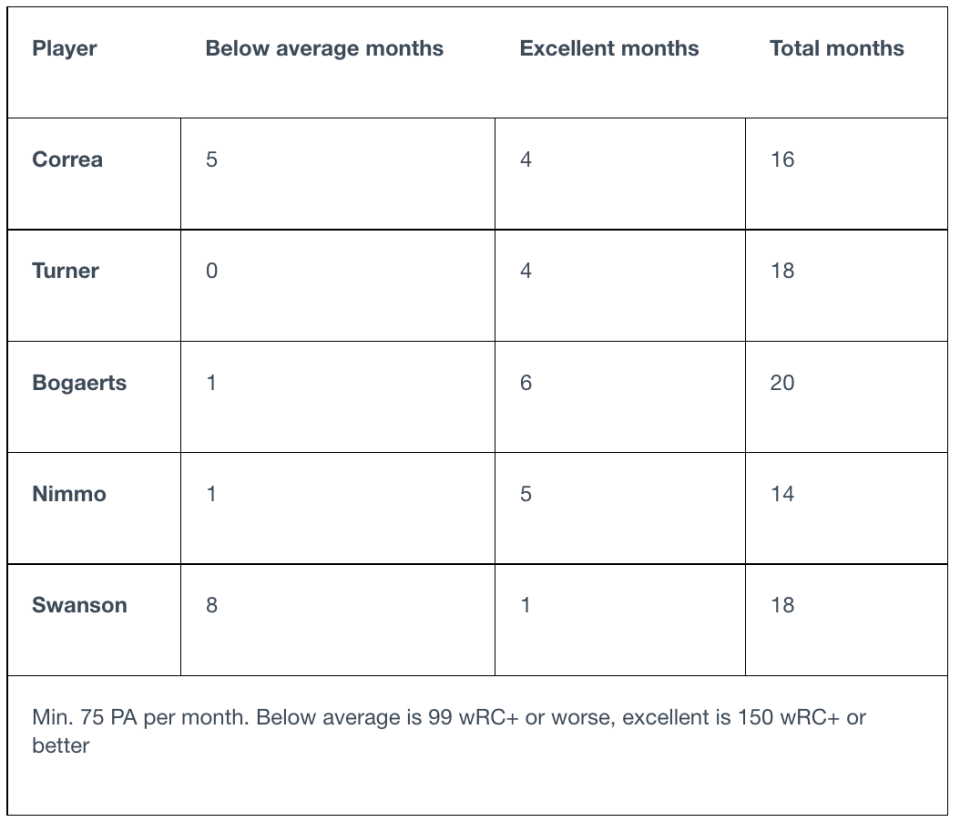

Someone is probably willing to bet on the No. 1 draft pick pedigree, the durability, the leadership qualities and what the numbers say was huge defensive improvement in 2022, figuring that Swanson will produce somehow, some way. But if I had $20-25 million to spend on a key bat this offseason, I’d hang my hat on Nimmo’s more surefire skills.
Edwin Diaz, relief pitcher (29) — re-signed by the Mets on five-year, $102 million deal
Diaz is on another planet right now, which is how a relief pitcher gets a $102 million deal without even reaching the open market. He is so unhittable — he struck out more than half the batters he faced in 2022 — that the record money is worth it to have him available in the biggest moments for the next year or two. That’s what you pay for that assurance, with the understanding that even the best relievers could drop off precipitously within a few years. Until then, sound the trumpets.
Willson Contreras, catcher (31)
Longtime Cubs backstop Contreras comes with a different expectation reality check: He’s not an elite defensive catcher, but he’s more than passable given his stellar bat. A vast swath of contenders could use Contreras, especially with the universal DH now in place. A .466 slugging percentage from anyone who can don the tools of ignorance is worth going after. If you can pair Contreras with an elite defensive backup or if MLB happens to implement an automatic strike zone during his contract, even better. After he surprisingly stayed put at the trade deadline, don’t rule out a return to Wrigley.
Chris Bassitt, starting pitcher (34)
Nathan Eovaldi, starting pitcher (33)
The starting pitching star power drops off pretty quickly among this winter’s options. Bassitt and Eovaldi are the most proven of the non-ace, non-legend crop. They are still very important. Teams with playoff expectations will be trying to sign them as No. 3 starters, maybe No. 2 starters. Expressed in numbers: Among starters who have thrown at least 250 innings the past two seasons, Bassitt is 29th in park-adjusted ERA-, and Eovaldi is 34th.
They get there in very different ways. Bassitt wields an expansive arsenal with extreme attention to detail, occasionally shaking off his catcher five times per pitch. He keeps hitters off-balance with a mix of darting fastballs and looping curveballs. And he avoids throwing meatballs. Eovaldi attacks directly, relying on the wow factor of his stuff to miss bats. He gets more swinging strikes and allows fewer walks than Bassitt (or just about anyone on that last bit) but also remains susceptible to the long ball.
What they have in common? They will soak up innings and soldier through tough games. Bassitt’s formula seems like it will age more gracefully, but it would be interesting to see Eovaldi in a bigger park.
Kodai Senga, starting pitcher (30)
Here’s your best source of intrigue on the pitching front if your team isn’t going after one of the aces. A dominant right-hander in Japan’s NPB, Senga has long sought to test his mettle in MLB. He will bring upper-90s fastball velocity and a strikeout pitch with an incredible name, the “Ghost Fork,” stateside for 2023.
FINE WINES
Jose Abreu, first baseman/designated hitter (36) — reportedly signing with Astros on three-year deal
Anthony Rizzo, first baseman/designated hitter (33) — re-signed by Yankees on two-year, $40 million deal with club option for 2025
Abreu and Rizzo are two of the best bats you’ll be able to find on short-term deals. The first basemen bat from different sides and with different approaches but achieve similar results.
Abreu, a Chicago White Sox mainstay who won AL MVP in 2020, is a prodigious line-drive hitter and run producer. Even as his power began to decline in 2022, he adapted by notching a career-best strikeout rate and batting .304. Rizzo is pure pull power, with plenty of patience and a penchant for getting plunked. The longtime Cub has a wealth of October experience.
Michael Brantley, outfielder (36)
Speaking of playoff experience, Brantley played in five straight postseasons before a shoulder injury kept him out of this season’s Astros World Series run. Assuming teams agree that his shoulder is good to go for spring, some of the best strike zone control in MLB will keep him in demand on a short-term deal.
J.D. Martinez, designated hitter (35)
A few years removed from his peak as a terrifying, all-fields home run threat, Martinez experienced a worrisome dip in power in 2022 but still hit .274. He should be limited to DH duty at this point, but expect someone to take a flier to see if he can rediscover his stroke.
SOLID STARTERS
Andrew Benintendi, outfielder (28)
He’s left-handed. He’s a full-on good corner outfielder. He can and probably will make enough solid contact to threaten .300. It remains to be seen whether he will stick to the slap-hitting modus operandi he adopted in the Royals’ expansive home environs, but either way, Benintendi is an every-day presence that plenty of contenders could use.
Cody Bellinger, outfielder (27)
This might seem high for a guy who’s batting .193/.256/.355, and it definitely seems low for the 2019 NL MVP who is still only 27. Such is life with Bellinger, the young star turned disappointing enigma whom the Dodgers non-tendered. They would’ve needed to pay him something around $18 million in arbitration, based on MLB Trade Rumors’ projections, so they cut him loose. Now a flock of teams will try to convince him to sign a one-year deal and prove that there’s still an MVP contender — or at least a semi-productive hitter — in there.
Bellinger’s decline coincided with shoulder injuries in 2020, but he has also been swinging more — and at worse pitches — during his time in the wilderness. There’s at least some hope that he can continue climbing back toward his old normal, as there was serious improvement from 2021 to ’22, despite his overall line remaining below average.
What floats Bellinger into the “solid starter” grouping is superlative defense. He is instantly the most attractive center fielder on the market outside of Nimmo, and he carries the potential to pop over to first base and play great defense there on occasion. A team will give him a chance to reframe his skills and hope for the big bounce-back. Especially in cases such as this, there’s really no such thing as a bad one-year deal.
Josh Bell, first baseman (30)
Bell seems like a great addition. He’s a switch-hitting, 6-foot-4 first baseman who is remarkably good at avoiding strikeouts for a player his size. But he’s so frustratingly inconsistent that it can be difficult to know what to think about him. After batting .301 with 14 homers for the lowly Washington Nationals through early August, he managed only a .192 batting average with three homers after a trade to the San Diego Padres. That follows a similar dip from 2019 highs to 2020 lows. Even his handedness trends don’t follow a coherent pattern. Chances are Bell will give the team that signs him a strong final line, but the alternative is not pretty.
Mitch Haniger, outfielder/designated hitter (32)
Haniger is a good, right-handed hitter whose recent seasons have been absolutely torched by unfortunate injury luck. The bat is power first, especially since his return from missing the entire 2020 season. If someone gives him an every-day lineup slot (preferably at DH) and crosses their fingers, he could pop 30 homers.
Christian Vazquez, catcher (32)
Longtime Red Sox starter Vazquez was relegated to a backup role with the champion Astros, behind team leader Martin Maldonado. But there simply aren’t 29 better catchers than him. He’ll be someone’s primary option come spring.
Kolten Wong, second baseman (32) — $10 million club option picked up by Brewers
Jean Segura, second baseman (33)
Second basemen might be the players most affected by the infield shift limitations MLB is implementing in 2023. Wong was coming off the better offensive season. But his historically solid defense soured in 2022. The Brewers sided with history and picked up an option to keep Wong off the market.
Coming off his first postseason appearance, Segura could well return to the pennant-winning Philadelphia Phillies, even if it’s in a smaller role, but his see-ball-hit-ball abilities would have suitors on the open market.
Jurickson Profar, outfielder (30)
The former top prospect had quite the journey in professional baseball in his 20s. He’s coming off a 2022 season with the San Diego Padres that saw him take more plate appearances than ever and establish a good role as a patient, on-base-focused hitter. Profar is probably just average as a corner outfielder, and his batted ball metrics don’t point to any sort of power outbreak, but there’s no reason he can’t provide 500-plus smartly taken at-bats.
Other names to know: Trey Mancini, Adam Frazier, Omar Narvaez
ROTATION ROULETTE
Tyler Anderson, starting pitcher (33) — signed by Angels on three-year, $39 million deal
The second-best 2022 ERA among qualified starters on the free agent market belongs to … Anderson. A lefty whose leg-kick hitch evokes Kershaw, he found revelatory success with the Dodgers. His fastball sits at only 90-91 mph, but he keeps hitters guessing with a cutter and changeup.
Ross Stripling, starting pitcher (33)
Taijuan Walker, starting pitcher (30)
Jameson Taillon, starting pitcher (31)
We’re thoroughly in the muddy waters of No. 3 starters at this point, where reliability and upside often make for a bit of a delicate dance. Walker and Taillion are solid pitchers likely to give you average-ish run prevention and take the ball every fifth day. You absolutely need one or two guys like them on your staff, but there’s also not a lot of reason to think they’re going to turn into pitchers you want starting a playoff game.
So why is Stripling, whose 2022 totals of 24 starts and 134⅓ innings were career highs, the top option here? Because there’s at least a chance that he figured out a way to be more than a No. 3 with the Toronto Blue Jays. Once he joined the rotation for good in early June, Stripling accentuated an improved changeup, and it helped him get swings — and often misses — without risking loud contact. From June 1 on, his ERA and wOBA allowed ranked among the 15 best starters in baseball. That is unlikely to continue, but teams looking for a middle-of-the-rotation arm could certainly afford to see if those 20 starts are the beginning of something bigger.
Martin Perez, starting pitcher (32) — accepted Rangers’ qualifying offer, a one-year, $19.65 million deal
Zach Eflin, starting pitcher (29) — reportedly agreed to 3-year, $40 million deal with Tampa Bay Rays
Jose Quintana, starting pitcher (34)
Michael Wacha, starting pitcher (31)
In one manner or another, each of these pitchers found something in 2022. Perez seemed likely to stick with the Texas Rangers after a career year, but the rest of these veterans could shuttle around trying to find the team that believes in them most. Out of the group, Eflin’s arsenal-refining stint in the bullpen might be the most convincing story of rebirth.
MUCH-NEEDED RELIEF
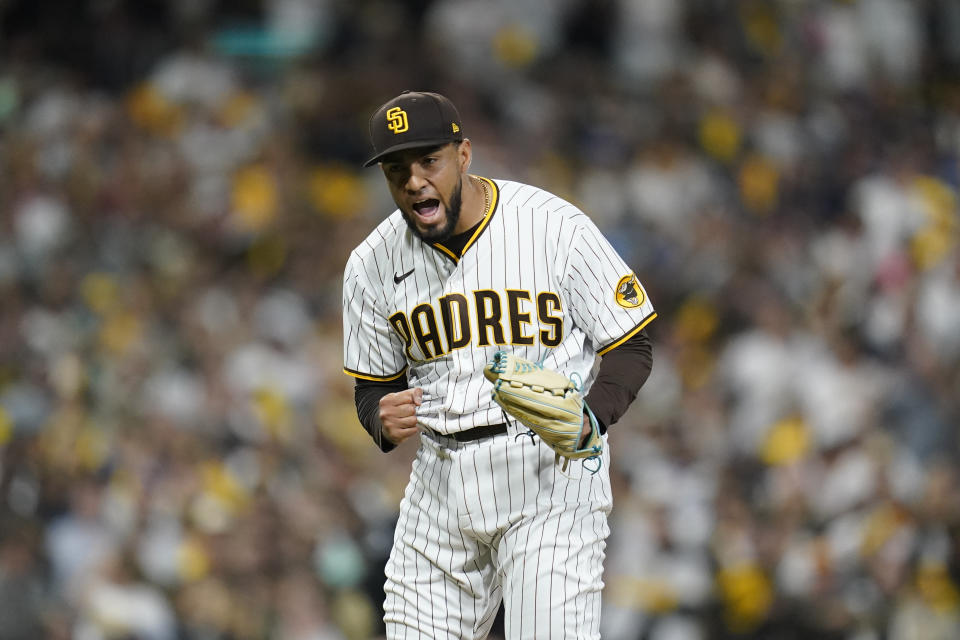

Robert Suarez, relief pitcher (32) — re-signed by Padres on five-year, $46 million deal
Rafael Montero, relief pitcher (32) — re-signed by Astros on three-year, $34.5 million deal
If your team is looking for a new featured player in the bullpen, these two late-blooming relief aces — each coming off impressive postseason performances — are the best options. Relievers are perhaps the most “What have you done for me lately?” of baseball players, and on that front, I’d lean toward Suarez, the erstwhile Padres flamethrower who reached the majors via the Mexican League and Japan’s NPB. Yes, he gave up two home runs in October, but his dynamite second half (1.48 ERA, 32 strikeouts to eight walks) as a rookie speaks to a pitcher progressing toward a very high ceiling.
Kenley Jansen, relief pitcher (35)
Jansen is still a great closer option. That said, he might be stuck working on one-year deals at this stage.
Nick Martinez, relief pitcher (32) — re-signed by Padres on three-year, $26 million deal
His arsenal was all over the place in 2022, with sinkers and cutters rising to replace a battered four-seamer. Some clubs might want to see that new version of him as a starter, but I’d be interested in seeing Martinez reprise the role the Padres used him in during October.
Other names to know: Chris Martin, Adam Ottavino, David Robertson, Taylor Rogers, Matt Moore
TUMBLING DICE
Andrew Heaney, starting pitcher (32)
Heaney is a story of one amazing ability and two blaring bugaboos. The Dodgers leapt at the lefty last winter, and what do ya know, he came out with a tweaked slider and struck out a ridiculous 35% of the batters he faced. Alas, injuries limited him to 16 games (14 starts), and he still gave out home runs like they were candy on Halloween. His career 1.63 HR/9 is the second-worst of any pitcher with at least 500 innings in the past decade. And even in his most intriguing form, the 2022 rate was even higher.
Michael Conforto, outfielder (30)
Conforto wound up sitting out the entire 2022 season after a disappointing contract year with the New York Mets and a qualifying offer conspired to sap his market last winter. He had shoulder surgery in the meantime and will be a fascinating comeback case. In case you forgot, he ranked as a top-30 position player in baseball by WAR in 2019 and ’20.
Joey Gallo, outfielder (29)
Gallo has not regained the delicate balance in his Bunyan-esque swings that made him a star in Texas. Tough stints in New York and Los Angeles are rough for the brand, but someone will give him a shot to try again.
Other names to know: Sean Manaea, Gary Sanchez
BEST SUPPORTING ACTORS
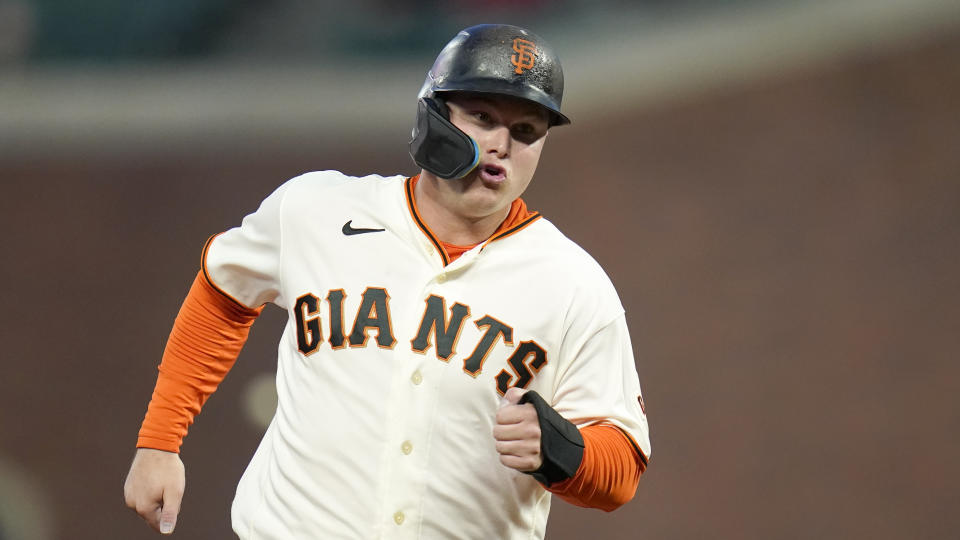

Joc Pederson, outfielder (31) — accepted Giants’ qualifying offer, a one-year, $19.65 million deal
The frequent playoff hero didn’t make it to October this year with the San Francisco Giants, but he did log career-best offensive numbers, making more consistent hard contact. He still shouldn’t face many left-handed pitchers, but with the damage he can do against right-handers, Pederson is the best platoon player in baseball.
Wil Myers, first baseman (32)
Brandon Drury, outfielder (30)
What if Joc, but for the short side of the platoon? Myers and Drury are right-handed hitters who can demolish the less common southpaws. They theoretically offer defensive versatility — Myers at first and outfield, Drury all over the place — but don’t field any spot particularly naturally.
Drury raises some red flags for having the bulk of his outlier year in Cincinnati’s bandbox of a park. All of his numbers sank once he went to San Diego.
Kevin Kiermaier, outfielder (33)
Kiermaier is worse against left-handed pitchers, yes, but mostly he’s a defensive specialist. If the Tampa Bay Rays decline his club option, he’s going to be signed to roam center field, a job he has done as well as anyone in recent memory.
ONE LAST JOB
Johnny Cueto, starting pitcher (37)
Maybe the surprise of the season, the always entertaining Cueto popped up with the White Sox, rebounded from several injury-riddled seasons and fired 158⅓ innings with a 3.35 ERA. He’ll certainly have the opportunity to try to do that again.
Elvis Andrus, shortstop (34)
Andrus also had a White Sox renaissance. He hadn’t been an above-average hitter since 2017, until suddenly … he was. He batted .271 with nine eyebrow-raising homers in 43 games for Chicago. Add his still-solid shortstop defense, and Andrus will be in demand.
Justin Turner, third baseman (38)
Evan Longoria, third baseman (37)
The two veteran third basemen of the Dodgers-Giants rivalry can still hit a bit, even if they are due for smaller roles. Both have club options that are unlikely to be picked up, but it wouldn’t be a surprise if they stuck around on new deals.
Other names to know: Corey Kluber, Nelson Cruz, Aroldis Chapman, Craig Kimbrel, Zack Greinke, Rich Hill
